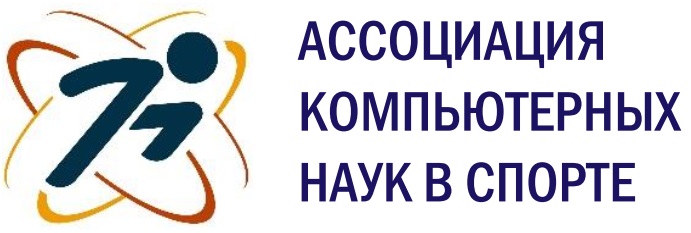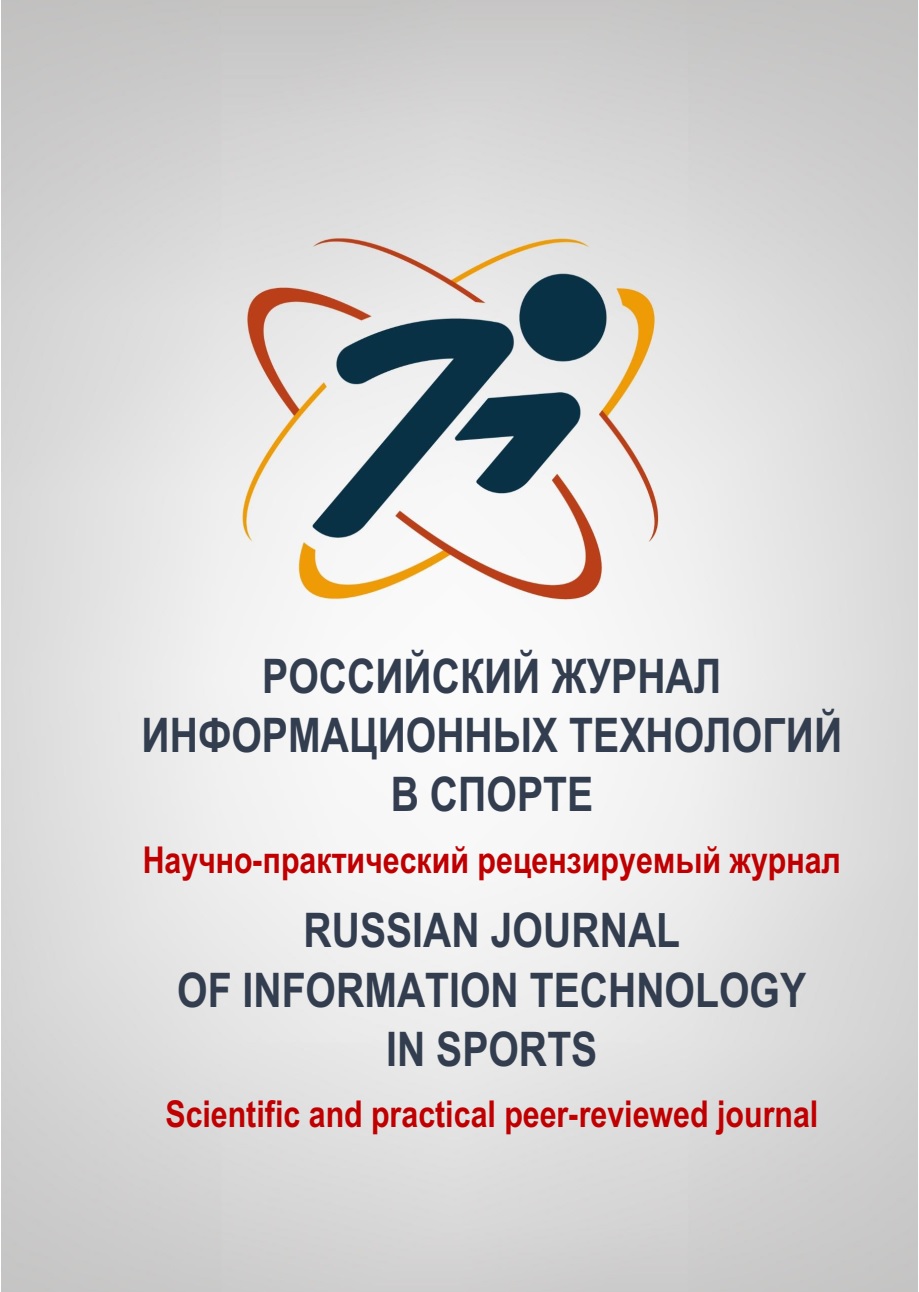Moscow, Russian Federation
Moscow, Moscow, Russian Federation
VAK Russia 1.5.5
VAK Russia 1.2.2
VAK Russia 1.5.2
VAK Russia 1.5.8
VAK Russia 3.3.9
VAK Russia 5.8.4
VAK Russia 5.8.5
VAK Russia 5.8.6
UDC 001.891.572
UDC 001.891.573
UDC 303.094.7
UDC 577.359
UDC 51-76
UDC 347.514.3
UDC 355.233.22
CSCSTI 34.39
CSCSTI 34.17
CSCSTI 00.77
CSCSTI 77.00
CSCSTI 20.00
Russian Classification of Professions by Education 01.04.03
Russian Classification of Professions by Education 02.00.00
Russian Classification of Professions by Education 06.00.00
Russian Classification of Professions by Education 09.00.00
Russian Classification of Professions by Education 32.00.00
Russian Library and Bibliographic Classification 222
Russian Library and Bibliographic Classification 22
Russian Library and Bibliographic Classification 28
Russian Library and Bibliographic Classification 58
Russian Library and Bibliographic Classification 75
Russian Trade and Bibliographic Classification 6464
Russian Trade and Bibliographic Classification 5
BISAC SCI036000 Life Sciences / Human Anatomy & Physiology
BISAC SCI009000 Life Sciences / Biophysics
BISAC COM014000 Computer Science
BISAC COM072000 Computer Simulation
BISAC COM062000 Data Modeling & Design
BISAC COM089000 Data Visualization
BISAC COM032000 Information Technology
Relevance. It is known that in response to the onset of physical exercise, lung ventilation increases very quickly, within a few seconds. Existing theories of breathing control based on the blood gas composition cannot explain the rapid ventilation increase solely due to an increase in the tissues’ oxygen consumption and carbon dioxide production. Cardiodynamic hyperpnea and muscle pump with peripheral vasodilation mechanisms suggest that systemic and pulmonary blood flow increases rapidly at the physical exercise onset. At the same time, the ventilation to blood flow ratio immediately decreases. Therefore, the CO2 content increases and O2 content decreases in the arterial blood flowing from the lungs. When this blood reaches the peripheral sinocarotidsinus chemoreceptors, the increased impulses from the chemoreceptors cause a rapid increase in the lung ventilation. Although these physiological mechanisms require thorough experimental clarification, mathematical simulation allows us to investigate which certain mechanisms can explain the experimental data on the rapid response of the cardiorespiratory system to the physical exercise onset. The aim of this study is to develop a human breathing regulation and pulmonary gas exchange mathematical model, applicable for the human gas exchange and ventilatory response to moderate physical exercise simulation over periods of about 7 minutes. Model verification by the qualitative comparison of the simulation results with literature data confirmed its adequacy. Results. A compartment mathematical model with four reservoirs (pulmonary, tissue, cerebral, and external) has been created. The model includes the equations of: gas exchange, Ben-Tal lung mechanics, chemoreflective regulation of Magosso-Ursino and blood transport properties. The verification was carried out by comparison with experimental data. Conclusions. At a qualitative level, the theory of “cardiodynamic hyperpnea” describes well the cardiorespiratory system’s response to physical exercise. The blood flow & ventilation rapid increase in response to physical exercise onset and subsequent slower processes in the respiratory response to physical exercise are manifested in the alveolar fractional concentration of CO2 increase, in the alveolar fractional concentration of O2 moderate decrease and in a following ventilation additional increase, expressed by the interaction of peripheral and central chemoreflexes.
gas exchange, mathematical simulation, hyperapnea, cardiodynamic hyperpnea, breathing during exercise
1. Grodins F.S., Gray J.S. Mathematical models of respiratory regulation. Annals of the New York Academy of Sciences, 1963, 109 (2), pp. 852-868. DOI: https://doi.org/10.1111/j.1749-6632.1963.tb13510.x
2. Maggosso E., Ursino M. A mathematical model of CO2 effect on cardiovascular regulation. American Journal of Physiology-Heart and Circulatory Physiology, 2001, 281 (5), pp. H2036–H2052. DOI:https://doi.org/10.1152/ajpheart.2001.281.5.H2036
3. Duffin J., Mohan R.V., Vasilou P., Stephenson R., Mahamed S. A Model of the chemoreflex control of breathing in humans: model parameters measurement. Respiration physiology, 2000, 120(1) , pp. 13–26. DOI: https://doi.org/10.1016/s0034-5687(00)00095-5
4. Golov A.V., Simakov S.S. Mathematical model of regulation of pulmonary ventilation in hypoxia and hypercapnia. Computer research modeling, 2017, 9 (2), pp. 297-310. (in Russ.) DOI: https://doi.org/10.20537/2076-7633-2017-9-2-297-310 EDN: https://elibrary.ru/ymsfaf
5. Matveikin V.G., Alekseyev S.Y., Zakharov A.Y., Tugolukov E.N. A method for the development of self-contained breathing apparatus using computer modeling. International Journal of Engineering and Technology (UAE), 2018, 7(3), pp. 481–486. DOI: https://doi.org/10.14419/ijet.v7i3.14.17046
6. Ermolaev E.S., Dyachenko A.I., Shulagin Yu.A. Simulation of human breathing gas exchange for the ventilation regulation study. Physics of biology and medicine, 2024, (1), pp. 55-76. (in Russ.) DOI: https://doi.org/10.7256/2730-0560.2024.1.69226 EDN: https://elibrary.ru/revvju
7. Ermolaev E.S., Dyachenko A.I., Shulagin Yu.A. Mathematical models of human breathing regulation and gas exchange during physical exercises. Russian Journal of Information Technology in Sports, 2025, 2 (2), pp. 61–75. (in Russ.) DOI: https://doi.org/10.62105/2949-6349-2025-2-2-61-7 EDN: https://elibrary.ru/wkpmta
8. Breslav I.S., Bryantseva L.A., Voronov I.B. et al. Physiology of respiration. Fundamentals of modern physiology, Saint Petersburg, Nauka Publishing House, 1994, 680 p. (in Russ.) EDN: https://elibrary.ru/wasteb
9. Ben-Tal A. Simplified models for gas exchange in the human lungs. Journal of Theoretical Biology, 2006, 238(2), pp. 474-495. DOI: https://doi.org/10.1016/j.jtbi.2005.06.005
10. Dyachenko A.I., Ermolaev E.S., Shulagin Yu.A., Goncharov A.O., Suvorov A.V. Experimental and theoretical study of human ventilation response to hypercapnia using a mathematical model of gas exchange. Aerospace and Environmental Medicine, 2015, 49 (3), pp. 38-43. (in Russ.) EDN: https://elibrary.ru/tvmxof
11. Spencer J.L., Firouztal E., Mellins R.B. Computational expressions for blood oxygen and carbone dioxide concentrations. Annals of Biomedical Engineering, 1979, 7(1), pp. 59–66. DOI: https://doi.org/10.1007/BF02364439
12. Cullen J.D., Eger E.I. Cardiovascular effects of Carbone dioxide in man. Anesthesiology, 1974, 41(4). DOI: https://doi.org/10.1097/00000542-197410000-00006
13. Kelman G.R., Nun J.F., Prys-Roberts C., Greenbaum R. The influence of cardiac output on arterial oxygenation: a theoretical study BJA: British Journal of Anaesthesia, 1967, 39(6). DOI: https://doi.org/10.1093/bja/39.6.450
14. Rothe C.F., Maass-Moreno R., Flanagan D. Effects of hypercapnia and hypoxia on the cardiovascular system: vascular capacitance and aortic chemoreceptors. American Journal of Physiology-Heart and Circulatory Physiology, 1990, 259(3), pp.H932-H939. DOI: https://doi.org/10.1152/ajpheart.1990.259.3.H932
15. Cherniack N.S., Longobardo G.S. Oxygen and carbon dioxide gas stores of the body. Physiological Reviews, 1970, 50(2), pp. 196–243. DOI: https://doi.org/10.1152/physrev.1970.50.2.196
16. Farhi L.E., Rahn H. Dynamics of changes in carbon dioxide stores. Anesthesiology, 1960, 21, pp. 604-614. DOI: https://doi.org/10.1097/00000542-196011000-00004
17. West J. Physiology of respiration. Moscow, Mir, 1988, 196 p. (in Russ.) ISBN: 5-03-000702-4
18. West J.B. The collaboration of Antoine and Marie-Anne Lavoisier and the first measurements of human oxygen consumption. American journal of physiology-lung cellular and molecular physiology, 2013, 305(11), pp. L775–L785. DOI: https://doi.org/10.1152/ajplung.00228.2013
19. Kanaev N.N., Shik L.L., Kuznetsova V.K. Guidelines for Clinical Respiratory Physiology. Leningrad, Medicine Publ., 1980, 376 p. (in Russ.) URL: https://rusneb.ru/catalog/000199_000009_001016890/
20. Wasserman K., Whipp B.J., Casaburi R. Respiratory control during exercise. Comprehensive Physiology, 2011, pp. 595-619. DOI: https://doi.org/10.1002/cphy.cp030217
21. Hermand E., Lhuissier F.J., Larribaut J., Pichon A., Richalet J.P.Ventilatory oscillations at exercise: effects of hyperoxia, hypercapnia, and acetazolamide. Physiological reports, 2015, 3(6), Art. e12446. DOI: https://doi.org/10.14814/phy2.12446
22. Wasserman K. Breathing during exercise. New England Journal of Medicine, 1978, 298(14), pp. 780-785. DOI: https://doi.org/10.1056/NEJM197804062981408
23. Weissman M.L., Jones P. W., Oren A., Lamarra N., Whipp B.J., Wasserman K. Cardiac output increase and gas exchange at start of exercise. Journal of Applied Physiology: Respiratory, Environmental and Exercise Physiology, 1982, 52 (1), pp. 236-244. DOI: https://doi.org/10.1152/jappl.1982.52.1.236
















